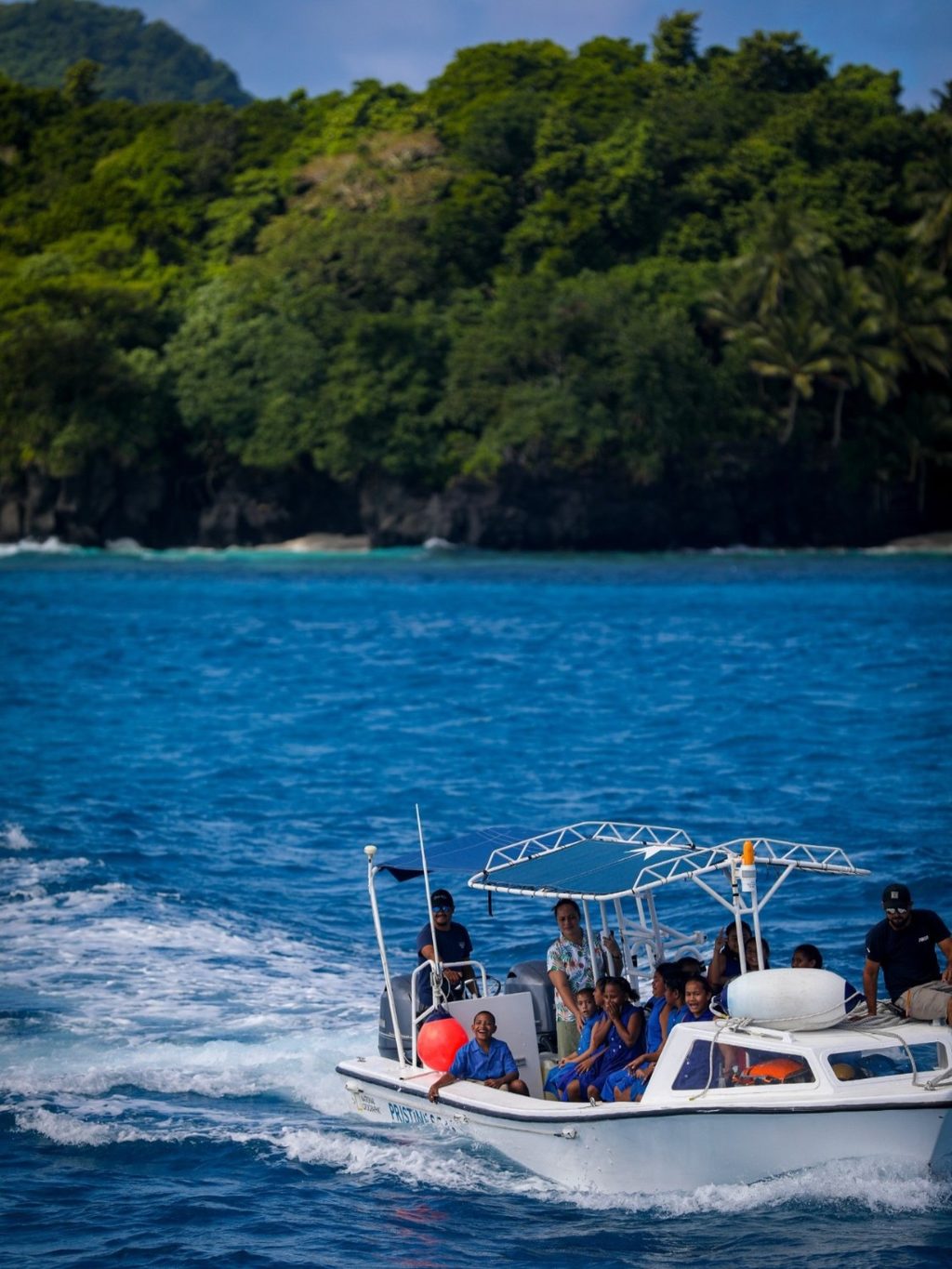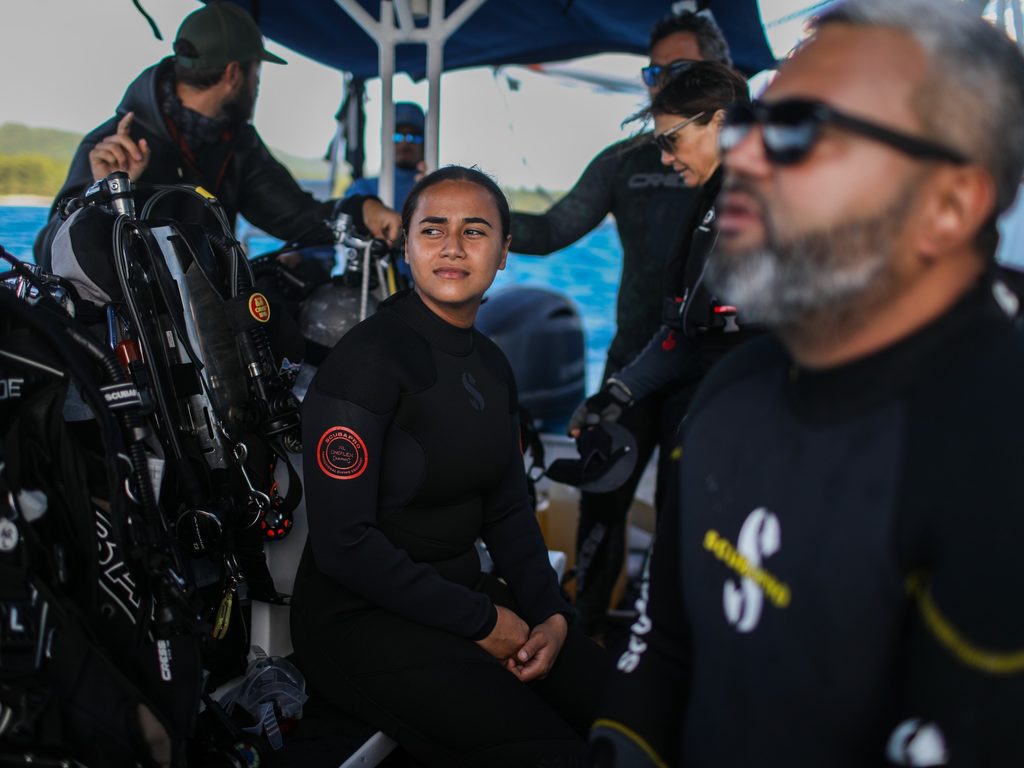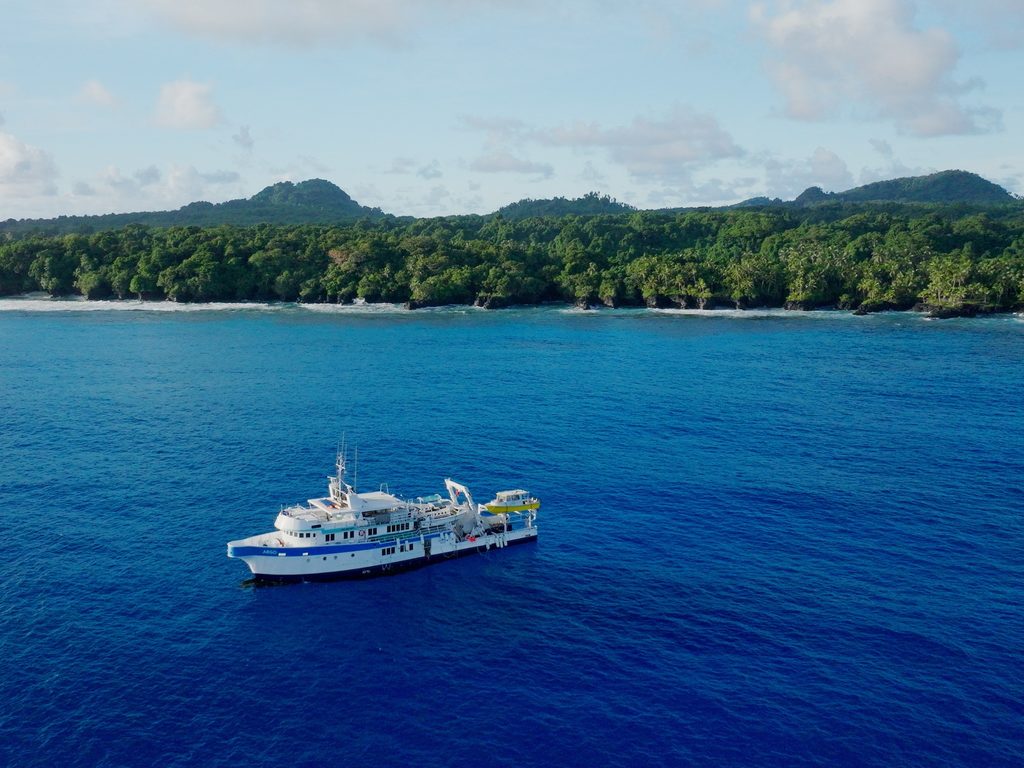A recent scientific expedition to Rotuma has uncovered vibrant coral reefs and spectacular marine life, sparking excitement among researchers and the local community alike.
This was shared by the expedition director of National Geographic’s Pristine Seas, Ryan Jenkinson in an interview with PMN’s Aui’a Vaimaila Leatinu’u earlier this week.
The team has just wrapped up an ambitious two-part survey and education program on the remote northern island.
The mission aimed to document the underwater ecosystems around Rotuma and work closely with locals to blend traditional knowledge with modern science.
“We split our visits to Rotuma into two phases,” Jenkinson said.
“The first focused on deep-water habitats offshore, while the second looked at the coral reefs and shallower waters closer to the island, areas the local community engages with daily.”
A reef in rare health
The team was especially encouraged by the state of Rotuma’s coral reefs, which have remained remarkably healthy despite the widespread coral bleaching seen across the Pacific.
“Our biggest takeaway was that the coral reefs are alive,” Jenkinson said.
“There’s been damage in some areas, but overall, the reef ecosystems are intact and vibrant.
That’s something to celebrate.”
The scientists also made a significant find, a manta ray cleaning station teeming with life.
These sites, where smaller fish clean parasites off larger marine species, are vital to ocean biodiversity.
According to Jenkinson, the untouched nature of the Rotuman site made it one of the most remarkable their global team has ever encountered.
“The cinematography our underwater crew captured is extraordinary,” he said.
“It’s a magical place. The mantas clearly haven’t encountered many people before, they were everywhere.”
Local voices at the helm
While the expedition brought advanced equipment and a seasoned team of marine experts, Jenkinson was clear that their work would not have been possible without the guidance and leadership of local Rotuman partners.
“We can have all the tech in the world, but we’ll never know Rotuma like the people who live here,” he explained.
“Our success depends entirely on the knowledge and support of local communities.”
Three Rotumans joined the ship-based team, Arthur and Alicia, who assisted on dives, and Fanny Taukave, a local schoolteacher.
Fanny played a dual role, participating in data collection while also exploring ways to integrate marine science into classroom education.
“She’s involved in everything,” said Jenkinson.
“Throwing remote cameras into the water, bouncing on boats, and sitting in discussions – all with the aim of helping young people understand their ocean.”
Even Rotuma’s council of chiefs took part, spending time aboard the vessel to observe the mission’s work firsthand.
“It’s been such a powerful collaboration,” Jenkinson added.
“A real mix of science, education, and cultural leadership.”
Next stop: Fiji
With the Rotuma leg now complete, the Pristine Seas team will turn their attention to other parts of Fiji, starting with the waters around Kadavu.
“We’re looking at both shallow coral reefs and deep-sea habitats,” Jenkinson said.
“The deep dives will be focused around the Great Sea Reef, along the northern edge of Fiji’s main islands.”
Local partners will again play a critical role, with Fijian divers, scientists and educators joining the mission.
The team will remain in Fiji until September, during which time they’ll run two dedicated educational programmes, one Pacific-wide, bringing in marine science teachers for shipboard training, and another focused solely on Fijian students and educators.
A message of gratitude
Reflecting on the Rotuma experience, Jenkinson described the island as one of the most special places the expedition has ever visited.
“The ocean here is spectacular,” he said.
“But even more extraordinary are the people, their passion, their connection to their land and sea, and the way they welcomed us into their world.”
“We feel honoured that the people of Rotuma trusted us to help tell their story. That’s what we’ll remember most, the people,” he added.
The findings from the Rotuma surveys will feed into National Geographic’s broader work advocating for ocean conservation and community-led marine protection efforts across the Pacific.
As the world grapples with climate change and biodiversity loss, islands like Rotuma, where local stewardship still thrives and coral reefs remain resilient, may hold vital lessons for the future of our oceans.
Rotuman school children on their way to visit the Argo.
Picture: NAT GEO PRISTINE SEAS

Alicia Emberson-Semisi, a Rotuman scientist who is part of the Pristine Seas expedition team. Picture: NAT GEO PRISTINE SEAS



